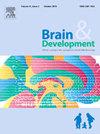Drug-resistant epilepsy in children post-neonatal seizures: Clinical profiles and predictors
IF 1.3
4区 医学
Q4 CLINICAL NEUROLOGY
引用次数: 0
Abstract
Objectives
To investigate the clinical profile, etiologies, and outcomes of neonatal seizures and identify predictors of drug-resistant epilepsy (DRE) in children.
Method
A retrospective chart review was performed on neonates with seizures admitted to Chiang Mai University Hospital, Thailand, from January 2008 to December 2023. The diagnosis of neonatal seizures was based on clinical findings and/or electroencephalography. Severe impairment refers to limited mobility and minimal speech, while profound impairment indicates being bedridden. DRE is defined as the failure of two antiseizure medications to control seizures.
Results
Among 218 patients (58.3 % male), the median seizure onset was 12 h (interquartile range [IQR]: 2.9–87 h). The leading etiology was perinatal asphyxia (58.7 %), followed by hemorrhage (7.8 %). The median follow-up was 27 months (IQR: 31.5 months). Epilepsy developed in 39 (27.3 %) patients, with 19 (48.7 %) meeting DRE criteria. Risk factors for epilepsy included marked abnormal neuroimaging, refractory neonatal seizures and severe to profound developmental impairment (P <0.05). In the multivariate model, profound developmental impairment (odds ratio [OR] = 2.89, p = 0.04, 95 % confidence interval [CI]: 1.79–24.19) and the development of epileptic spasms or multiple seizure types (OR = 114.80, p = 0.01, 95 % CI: 4.79–2746.07) were identified as an independent risk factor for DRE.
Conclusion
Perinatal asphyxia is the most common cause of neonatal seizures. One-third of neonates with seizures developed epilepsy, with half of them meeting the criteria for DRE. Neonates who develop epileptic spasms, exhibit multiple seizure types, or have profound developmental impairment are key DRE predictors.
新生儿癫痫发作后儿童的耐药癫痫:临床概况和预测因素
目的探讨新生儿癫痫发作的临床特点、病因和结局,并确定儿童耐药癫痫(DRE)的预测因素。方法回顾性分析泰国清迈大学医院2008年1月至2023年12月收治的癫痫新生儿。新生儿癫痫发作的诊断是基于临床表现和/或脑电图。严重损伤是指行动能力受限,言语能力极低,而深度损伤则是指卧床不起。DRE被定义为两种抗癫痫药物未能控制癫痫发作。结果218例患者中,男性占58.3%,癫痫发作中位数为12 h(四分位数间距:2.9 ~ 87 h)。主要病因是围产期窒息(58.7%),其次是出血(7.8%)。中位随访27个月(IQR: 31.5个月)。39例(27.3%)患者发生癫痫,其中19例(48.7%)符合DRE标准。癫痫的危险因素包括明显的神经影像学异常、难治性新生儿癫痫发作和重度至重度发育障碍(P <0.05)。在多变量模型中,重度发育障碍(优势比[OR] = 2.89, p = 0.04, 95%可信区间[CI]: 1.79-24.19)和癫痫性痉挛或多种发作类型(OR = 114.80, p = 0.01, 95% CI: 4.79-2746.07)被确定为DRE的独立危险因素。结论围产期窒息是引起新生儿癫痫发作最常见的原因。癫痫发作的新生儿中有三分之一发展为癫痫,其中一半符合DRE的标准。发生癫痫性痉挛、表现出多种发作类型或有严重发育障碍的新生儿是关键的DRE预测因素。
本文章由计算机程序翻译,如有差异,请以英文原文为准。
求助全文
约1分钟内获得全文
求助全文
来源期刊

Brain & Development
医学-临床神经学
CiteScore
3.60
自引率
0.00%
发文量
153
审稿时长
50 days
期刊介绍:
Brain and Development (ISSN 0387-7604) is the Official Journal of the Japanese Society of Child Neurology, and is aimed to promote clinical child neurology and developmental neuroscience.
The journal is devoted to publishing Review Articles, Full Length Original Papers, Case Reports and Letters to the Editor in the field of Child Neurology and related sciences. Proceedings of meetings, and professional announcements will be published at the Editor''s discretion. Letters concerning articles published in Brain and Development and other relevant issues are also welcome.
 求助内容:
求助内容: 应助结果提醒方式:
应助结果提醒方式:


